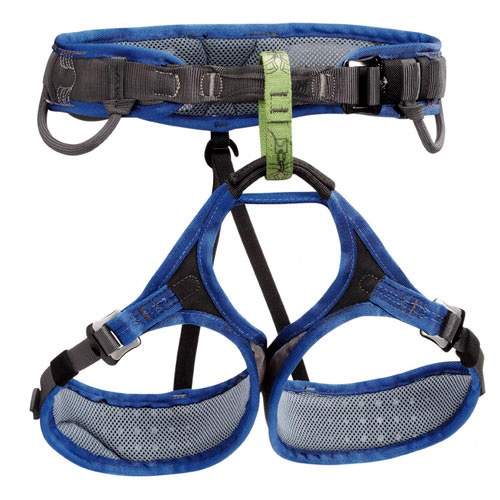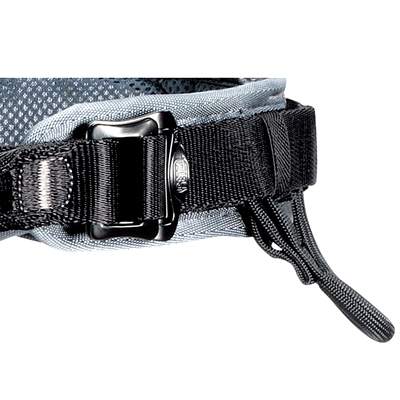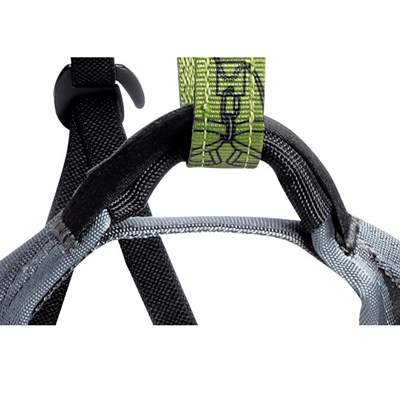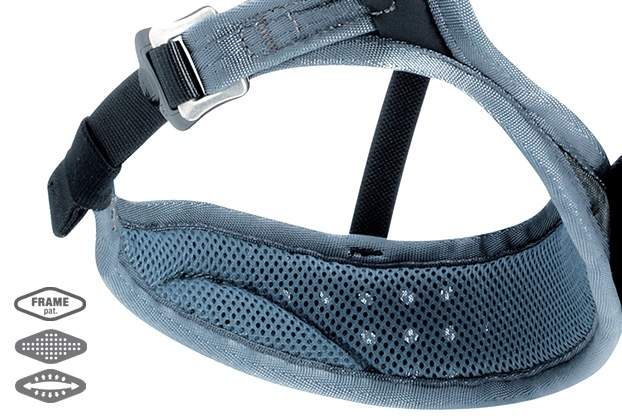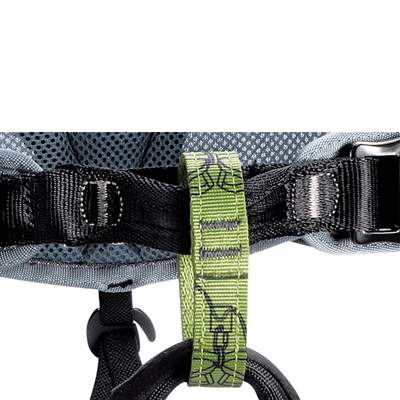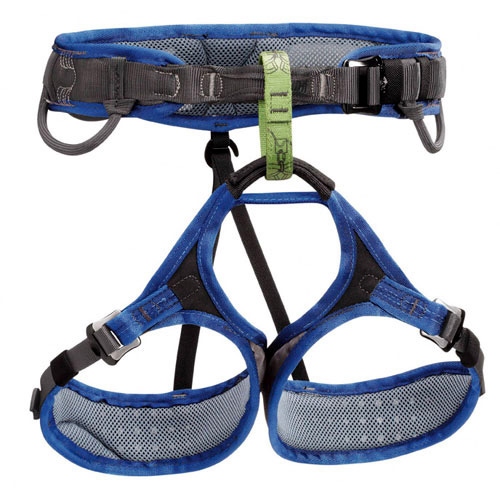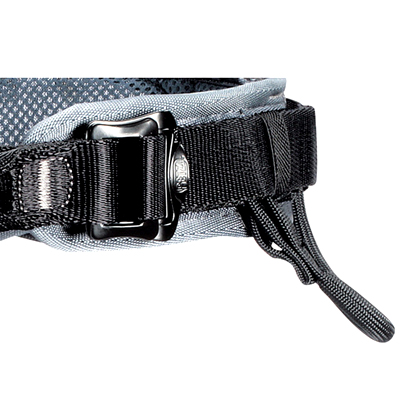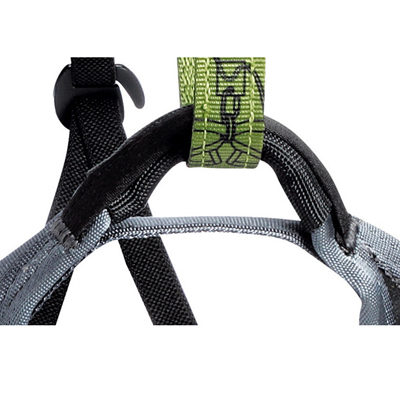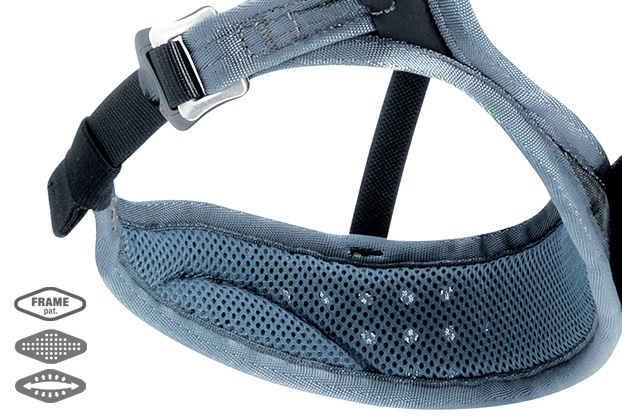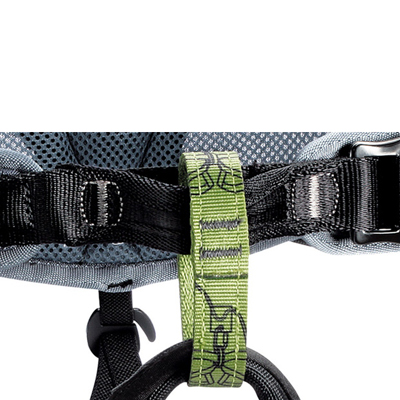Adjama
Description
Easy-to-adjust leg loops mean this harness is great for ice climbing and mountaineering in addition to cragging and route climbing. Low bulk and flexible rear equipment loops prevent the waistbelt from interfering while wearing a pack.
Frame Construction with breathable monofilament mesh evenly distributes pressure, providing maximum support and comfort
Adjustable leg loops allow size to be adjusted depending on comfort desired or layers of clothing worn and permit the harness to be put on when wearing skis or crampons
Woven polyester mesh on the inside of the harness wicks moisture for improved comfort and speeds drying in wet conditions
Perforated closed cell foam on the waistbelt and leg loops increases breathability
DoubleBack buckles are pre-threaded and adjust quickly with a single pull, helping to ensure proper closure
Green belay loop helps users identify proper tie-in / attachment point
Reinforced tie-in points for increased durability in this high-wear area
Rigid, inclined front equipment loops for easy access to gear; flexible rear loops stay out of the way while wearing a pack
Trail line loop
Two CARITOOL slots
Detachable elastic leg loop straps
Retail price
When you click a link below and then checkout online, no matter what you buy (climbing gear or not), we get a small commission that helps us keep this site up-to-date. Thanks!
Weight (g)  WeightIn grams, the weight, as stated by the manufacturer/brand. If there are differences in weight (due to multiple sizes or optional accessories) we'll list them here. The default weight is the middle-most size, often this is size M. | 420 g |
| Fit | Men |
| Sizes | S, M, L, XL, XXL |
Gear Loops  Number of Gear LoopsGear loops are used to hold gear (quickdraws, cams, etc) onto your harness. 4 gear loops is most common. 
0 - 1 Gear LoopsMost often on full body harnesses or guide/gym style harnesses. 2-3 Gear LoopsMostly found on lighter harnesses made for [ski] mountaineering or high-end sport climbing where weight is a high priority. 4 - 5 Gear LoopsThe standard/most common number for climbing harnesses. Perfect for sport and trad. More Than 6 Gear LoopsDesigned for long multi-pitch and big wall climbing, found on harnesses made to hold the maximum amount of gear. Worth ConsideringOccasionally, the number of gear loops will change on a harness model depending on the size. There could be 7 gear loops for the med/large but only 5 gear loops for the xsmall/small. In this case we list the highest number for the filters, and then write an explanation on the product page like, “Size S/XS can only fit 5 gear loops.” | 4 Gear loops |
Ice Clip Slots  Ice Clip SlotIce clipper slots are made to fit a carabiner that holds ice screws. These slots are generally only used by ice climbers but there is no disadvantage to having them on your harness. 
Less than 40% of harnesses will have ice clipper slots. And those harnesses will usually have 2 or 4 slots, often located next to, or between, the gear loops. | Yes, 2 |
| Belay / Tie-In | One Loop |
| Waist Buckle Type | Quick Adjust |
| Leg Buckle Type | Quick Adjust |
| Drop Seat | Yes |
Haul Loop  Haul LoopTrad climbers often look for a haul loop as they're intended to haul a rope (second line) or pack (while you climb the chimney). 
A haul loop can also hold shoes or other accessories. Although not the intended use, it is also commonly used to hold a chalk bag. | No (0kN) |
| Certification | UIAA, CE |
| Size Chart | |
This video goes over the different features of the harnesses in Petzl's line -- talking about the difference in mens/womens versions and the type of climbing you're doing.
Warning: This video is dubbed in English. If you're getting antsy, skip to section 7:40-8:15 for one of the most interesting parts, where they show a hardware specific camera inspection.
How to correctly use Petzl harness, inspection, donning and setup with instructional pictures.
Describes with words and helpful photos, how to protect your harness.

